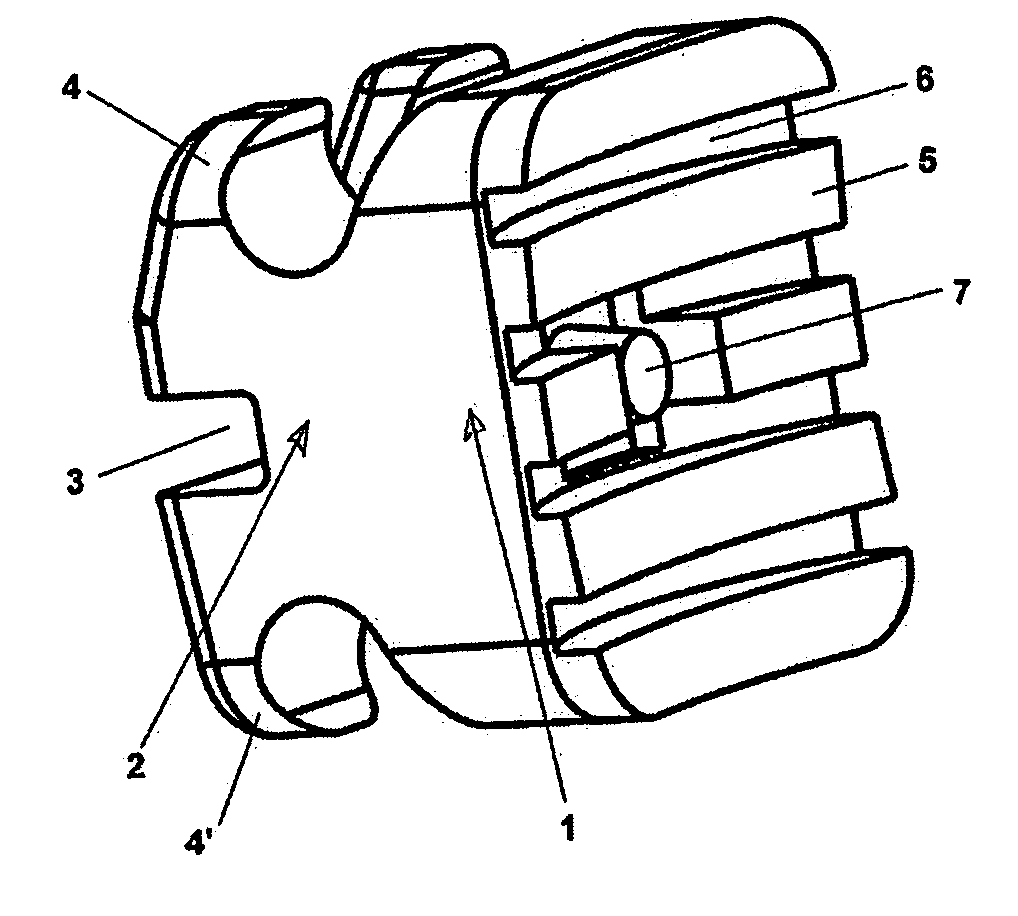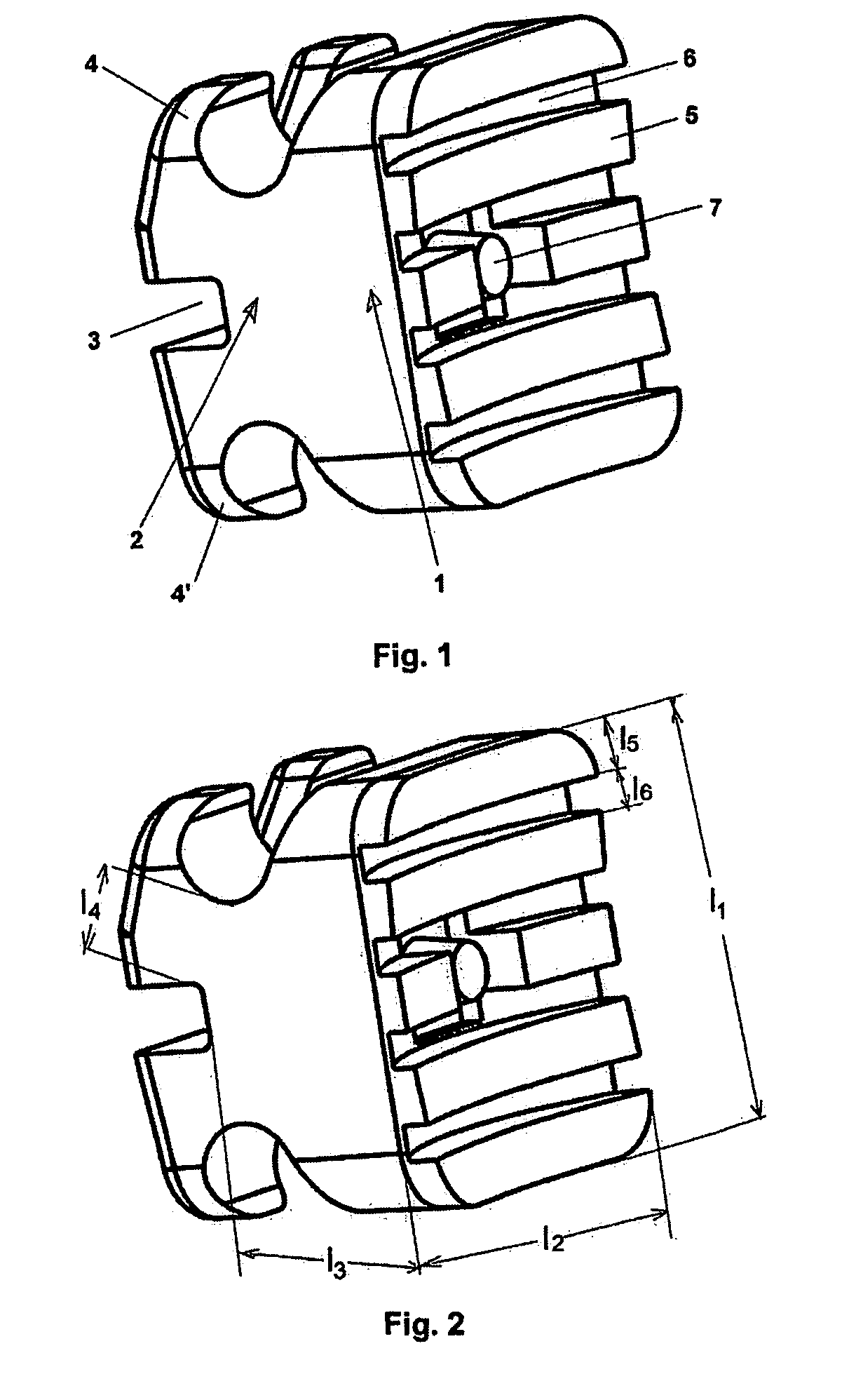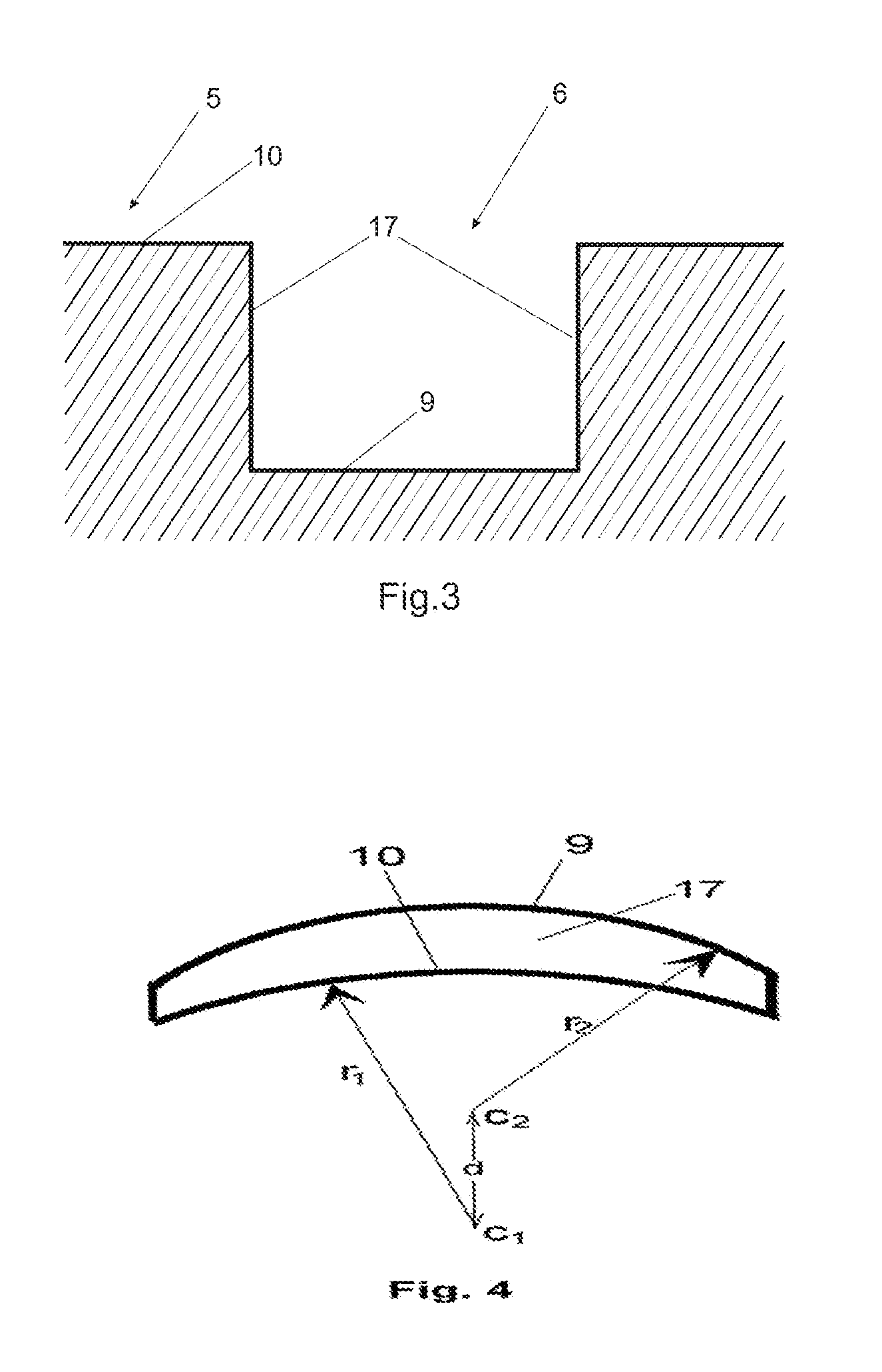Plastic bracket with mechanical retention and production method thereof
a technology of mechanical retention and plastic brackets, which is applied in the field of plastic brackets with mechanical retention and production methods thereof, can solve the problems of not easy to achieve, suffer a progressive degradation, and the plastic colour of the brackets can change up to becoming opaque, and achieve the effect of sufficient resistance and improved bracket fastening
- Summary
- Abstract
- Description
- Claims
- Application Information
AI Technical Summary
Benefits of technology
Problems solved by technology
Method used
Image
Examples
Embodiment Construction
[0053]As previously said, the variables considered for obtaining the bracket of the present invention are: manufacturing material, size of the bracket, form of the base, design of the mould and bombarding with sand blasting of said base.
[0054]The selected materials have been polycarbonate, polysulfone and polyethersulfone, because they behave well against the hydrolysis and when the finishing of the piece is the adequate one they keep the transparent colour without tending to turn opaque with the passing of time, resisting moreover to autoclave temperatures. These materials are not charged with any other material because the size of the bracket is about 8 mm3 and nowadays it is not easy to know which are the properties of a composed structure when dealing with such a small element because the measures for hardness are not sufficiently developed and contrasted due to the fact that the measuring markers for said measures neither are contrasted.
[0055]The bracket of the present inventio...
PUM
 Login to View More
Login to View More Abstract
Description
Claims
Application Information
 Login to View More
Login to View More - R&D
- Intellectual Property
- Life Sciences
- Materials
- Tech Scout
- Unparalleled Data Quality
- Higher Quality Content
- 60% Fewer Hallucinations
Browse by: Latest US Patents, China's latest patents, Technical Efficacy Thesaurus, Application Domain, Technology Topic, Popular Technical Reports.
© 2025 PatSnap. All rights reserved.Legal|Privacy policy|Modern Slavery Act Transparency Statement|Sitemap|About US| Contact US: help@patsnap.com



